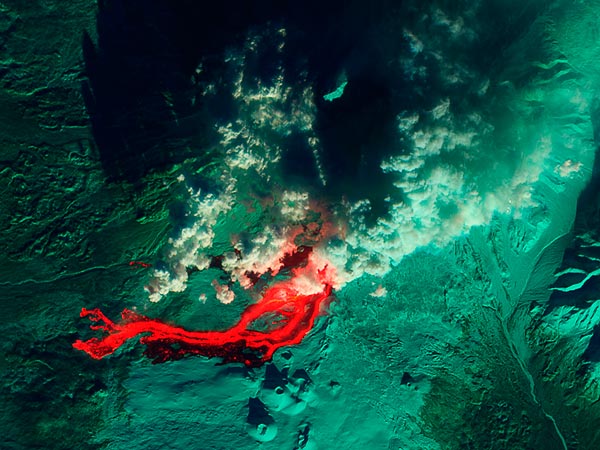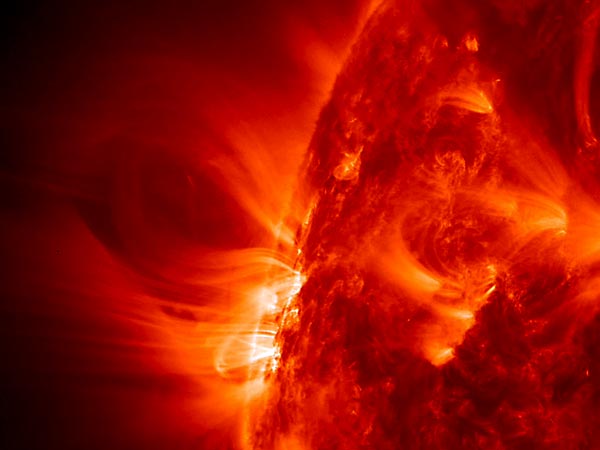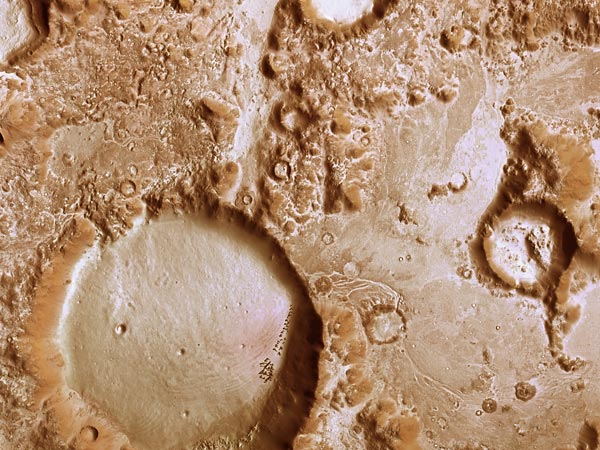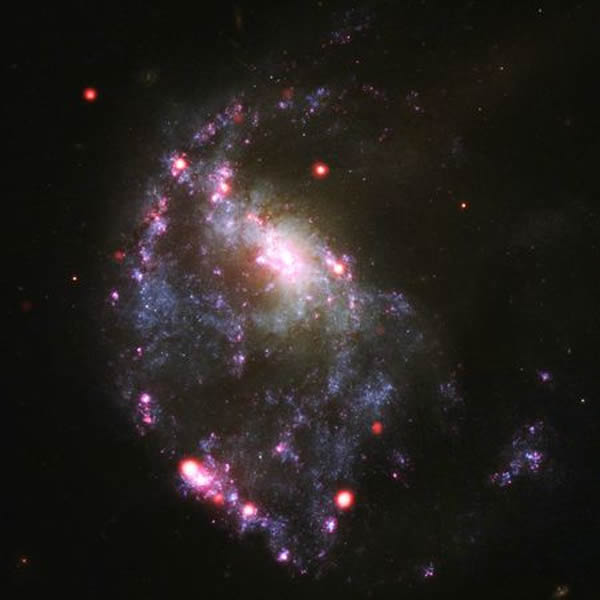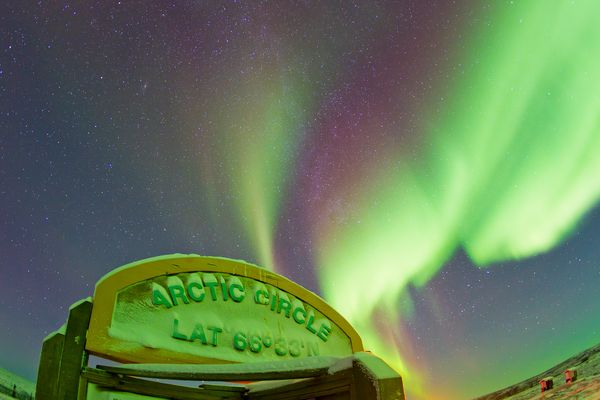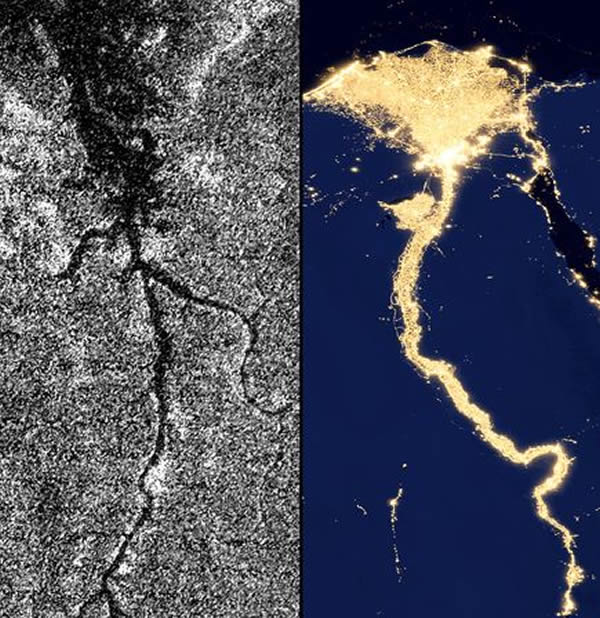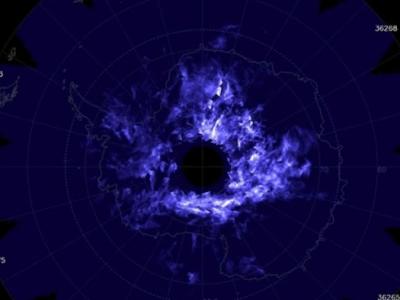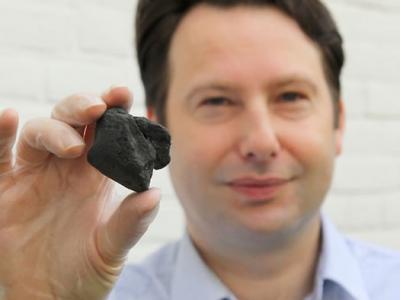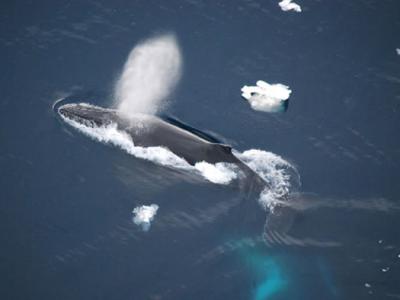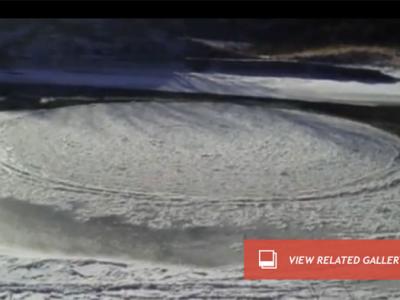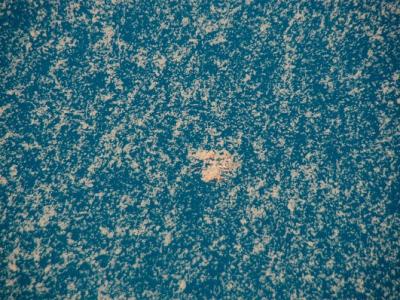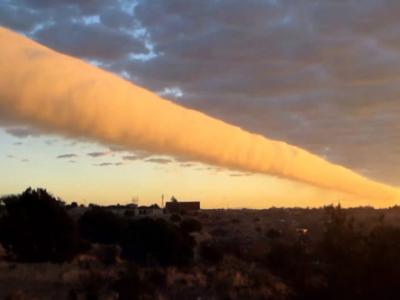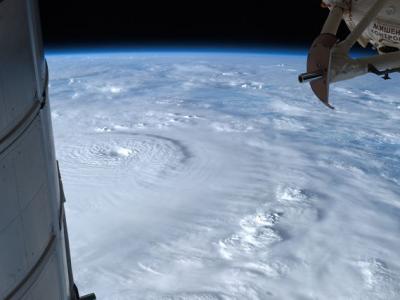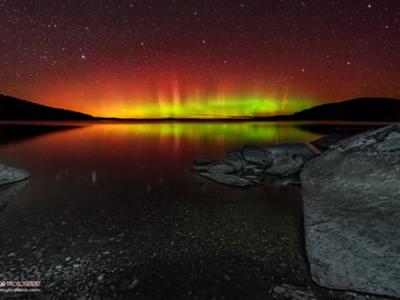Space Pictures This Week: Frosty Mars, Mini Nile, More
Red Hot
Lava glows bright red—an indication of superhot temperatures—in a false-color satellite image of Russia's Tolbachik Volcano taken on December 1.
In late November, Tolbachik—located on the Kamchatka Peninsula (map)—began erupting for the first time in 36 years. Tolbachik is a shield volcano: a low-profile, broad structure with a shape resembling an ancient warrior shield, according to NASA's Earth Observatory.
Sunburst
A relatively small coronal mass ejection, or CME—a cloud of superheated gas and charged particles hurled off the sun—occurred on December 4 and 5.
In the above image of the sun's surface, taken in extreme ultraviolet light, particles form looping coils along lines of the sun's magnetic field.
Frosty Mars
Mountainous features on Mars glisten in a high-resolution image taken by the European Space Agency's Mars Express stereo camera and released December 6.
"The brighter features, giving the image an ethereal winter-like feel in the color images, are surfaces covered with seasonal carbon dioxide frost," according to the ESA.
The picture was taken in Charitum Montes, a large group of rugged mountains near the Gale crater, which the NASA Mars rover currently roams.
Ring Galaxy
Ring galaxy NGC 922 is seen in a composite image containing x-rays from NASA's Chandra X-ray Observatory (red) and optical data from the Hubble Space Telescope (pink, yellow, and blue).
NGC 922 was formed by the collision between two galaxies—one seen in this image and another located outside the field of view.
This collision triggered the formation of new stars in the shape of a ring. Some of these were massive stars that evolved and collapsed to form black holes, according to the Chandra website.
Arctic Auroras
The aurora borealis, also known as the northern lights, illuminates the Arctic sky in a recent picture by National Geographic photographer Mike Theiss.
A storm chaser by trade, Theiss is in the Arctic Circle on an expedition to photograph auroras, which result from collisions between charged particles released from the sun's atmosphere and gaseous particles in Earth's atmosphere.
After one particularly amazing show, he wrote on YouTube, "The lights were dancing, rolling, and twisting, and at times looked like they were close enough to touch!"
Tale of Two Niles
A river system resembling the Nile has been spotted on Saturn's moon Titan by the European Space Agency's Cassini orbiter. The river—seen at left in a picture released December 12—stretches more than 250 miles (400 kilometers) from its headwaters to a large sea. The discovery is the first of such a vast river system outside of Earth.
Meanwhile, back home, a U.S. satellite captured a nighttime view of the real Nile River valley and delta in an image released December 5.
The image is part of a new project to show the glow of natural and human-built phenomena across the planet in greater detail than ever before.
